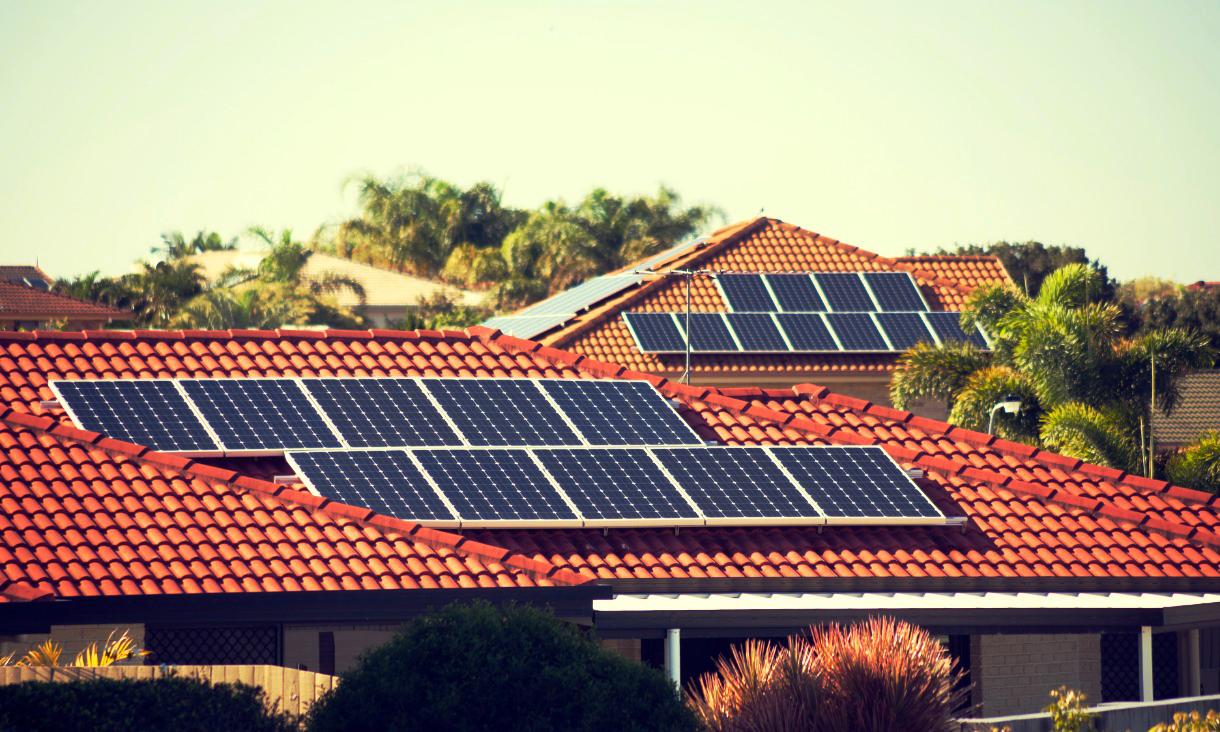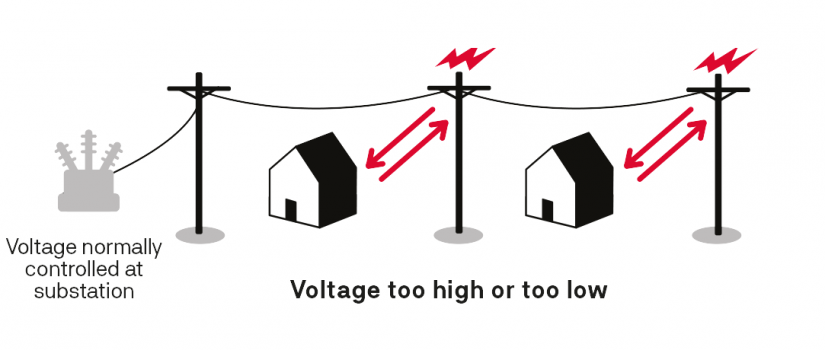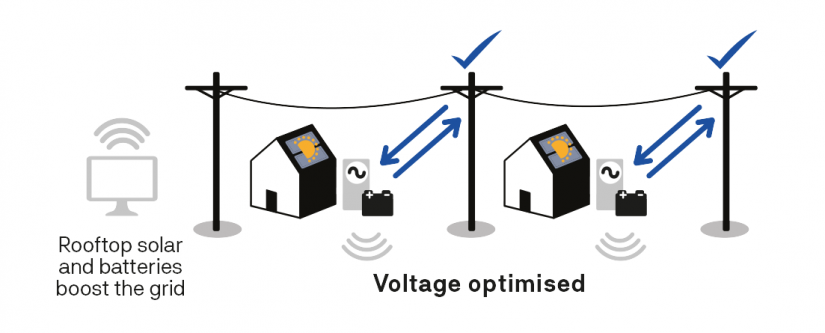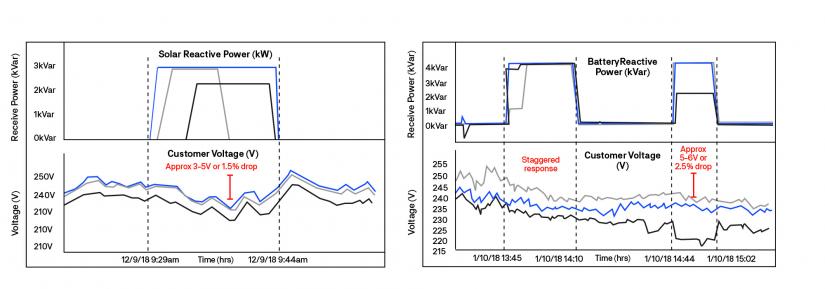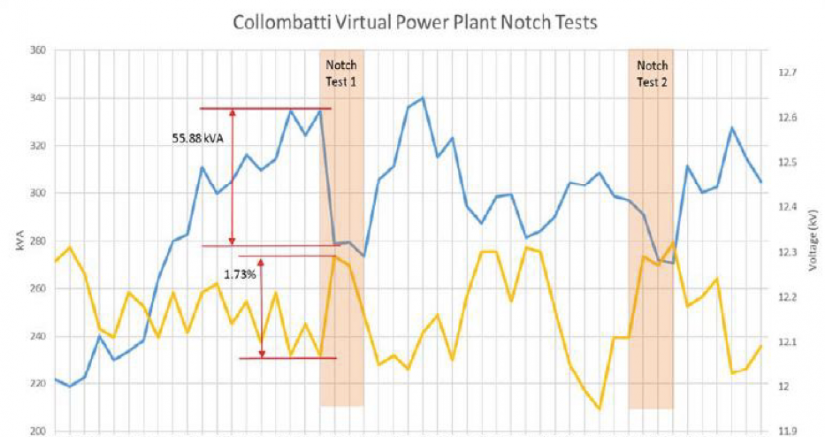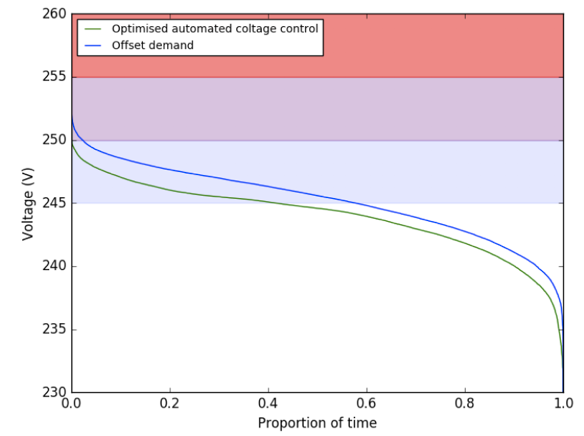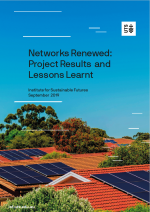The challenge
Supplying safe, reliable power to our homes is a complex task, particularly when it comes to managing voltage. Managing voltage is not a new problem due to our long power lines and different demands for electricity. However, it has become a bigger issue recently as more solar systems are connected to the grid. When solar generation is at its highest in the middle of the day, demand can be at its lowest (while people are at work), leading to a widening ‘voltage envelope’ that is difficult for the network business to resolve. This can limit the amount of solar that can be easily connected to the grid.
The innovation: Networks Renewed
The Networks Renewed trial aimed to address that perception by clearly demonstrating how solar PV and batteries can instead be a valuable resource for the businesses who manage electricity networks; changing the problem into a solution.
The project had two phases: a pilot-scale demonstration (2017-18) to test the technical voltage control capability at a small scale; followed by a market-scale demonstration to ramp up the deployment and deliver significant network impact (2018-19). 90 customers were recruited to the trial under innovative commercial models with three network business partners – Essential Energy in NSW, and United Energy and AusNet Services in Victoria. The control and integration technology was provided by two new energy businesses: Reposit Power and Mondo.
Results
The trial proved that both solar and batteries can support network voltage. Its success opens the door to a suite of new business opportunities based on the premise that rooftop solar can be an asset to everyone.
The other major outcomes were:
- Proving realistic alternatives to network-side voltage solutions
- Making voltage support services from solar and batteries accessible to network businesses
- Obtaining good results for participating customers, and
- Determining the network value of voltage support provided by customers.
Read about the 2018 pilot
NSW results
Over the past 12 months, we have run a pilot program in Collombatti NSW, trialling how smart solar PV and battery systems can be used to help networks manage the quality of electricity supply on the energy grid.
25 trial systems that have now been installed in Collombatti. These systems make up a virtual power station, which can respond to times of low and high voltages by generating and storing electricity. Our NSW network partner, Essential Energy is able to place bids for network support with the participants in the virtual power station.
For two tests conducted in late September 2018 where Essential Energy placed a bid for support, the virtual power station was able to generate over 50kW of electricity, improving local voltage by 1.73%. Our total target voltage for the trial program is 5.5%, which we will work towards as we extend the virtual power plant into the market scale trial. The chart below shows how the tests played out.
Victoria results
In an area of south east Victoria covered by United Energy’s network, the trials have focused on control algorithms that automatically dispatch generation and storage to improve local voltage.
The primary problem for customers in this area is high voltage, so the systems need to work to bring the volts back down to an appropriate range.
The trialled strategies aim to maximise the potential of solar power in the region, to intelligently sense what the voltage is in the nearby network and to directly respond to current voltage levels with both real and reactive power generation.
The pilot results here show that the range of voltages that the customers experienced was brought back into the allowable range of voltages.
Where to from here?
The next step for the program is to expand the trials to a market scale, where there are more participants in the virtual power plant and a greater ability to assess what the economic value is of this new service that electricity grid operators can use. ISF will be expanding the trial in NSW and adding a new area in the Victorian trial for the next stage.
What next?
It's now time to move this technical solution to a viable mainstream option. This diagram shows all the moving parts needed for customers to provide their support for the electricity grid Australia needs.
RESEARCH OUTPUTS
Networks Renewed ARENA website
Networks Renewed: Project Results and Lessons Learnt (Oct 2019)
The Business Case for Behind-the-Metre Inverter Control for Regulating Voltage (April 2019)
This report outlines the business case for behind the meter inverter control for regulating voltage. It provides a sample business case for demonstrating that the use of behind the meter inverter control can be an economic solution to regulating voltages. For each demonstration, the business cases used are described. The framework for doing this was built around the business model canvas – a method that provides a compact overview regarding all aspects of a business model.
Networks Renewed - Public Report - Technical Analysis (January 2017)
MEDIA
Press releases
New trial to unlock grid value in household solar and batteries, UTS Newsroom, 22 November 2016
Making our electricity grids smarter, ARENA, 22 November 2016
ARENA, ISF to trial solar-storage-smart inverter on 150 Australian homes, Clean Technology Business Review, 25 November 2016
ARENA and ISF to trial solar-storage-smart inverter on 150 Australian homes, Energy Storage News, 24 November 2016
New trial to unlock grid value in household solar and batteries, Energy Source and Distribution, 24 November 2016
Teaching solar to sing in harmony with the grid: trial tests inverters, Ecogeneration, 23 November 2016
Smart inverter trial aims to support grid, Utility Magazine, 23 November 2016
SDGs
This project is working towards UN Sustainable Development Goal 7 & 11.


